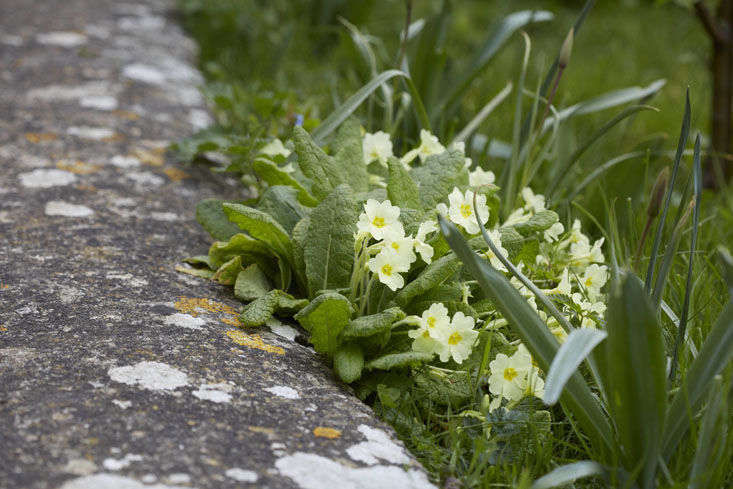

It’s easy to spot a primula, its rosette of palest yellow flowers the color of early spring sunshine. On the other hand, polyanthus, a retina-irritant in shades of red, magenta and royal blue, is also a primula.
It’s easy to spot a primula, its rosette of palest yellow flowers the color of early spring sunshine. On the other hand, polyanthus, a retina-irritant in shades of red, magenta and royal blue, is also a primula.
Primrose, Primula: “First Flower”
Primrose, Primula: “First Flower”
Photographs by Britt Willoughby Dyer.
Photographs by Britt Willoughby Dyer.
Unlike the winter bedding plants mentioned above, which seem to go on blooming forever, Primula vulgaris is synonymous with spring.
Unlike the winter bedding plants mentioned above, which seem to go on blooming forever, Primula vulgaris is synonymous with spring.
Primulas hybridize, all too readily. These variations have cross-pollinated with garden cultivars, while the specimen above is a false oxlip, a cross between a primrose and a cowslip.
Primulas hybridize, all too readily. These variations have cross-pollinated with garden cultivars, while the specimen above is a false oxlip, a cross between a primrose and a cowslip.
Common primrose, or Primula vulgaris, is happiest in rough grass, with sunshine or dappled shade.
Common primrose, or Primula vulgaris, is happiest in rough grass, with sunshine or dappled shade.
Cheat Sheet
Cheat Sheet
Primula elatior, the Oxlip, is not a hybrid but it does cross easily.
Primula elatior, the Oxlip, is not a hybrid but it does cross easily.
A cowslip meadow, accompanied by the seedheads of plantains. Formerly a common sight all over the British Isles, primroses were once as abundant as buttercups, author Richard Mabey suggests.
A cowslip meadow, accompanied by the seedheads of plantains. Formerly a common sight all over the British Isles, primroses were once as abundant as buttercups, author Richard Mabey suggests.
Keep It Alive
Keep It Alive
There is something about the daintiness, height, and seasonality of cowslips that makes them so appealing, in a similar way to daffodils.
There is something about the daintiness, height, and seasonality of cowslips that makes them so appealing, in a similar way to daffodils.
As the acknowledged first flower, prima rosa is symbolic of new beginnings. : See more ideas for woodland and shade gardens in Perennials 101: A Field Guide to Planting, Care & Design.
As the acknowledged first flower, prima rosa is symbolic of new beginnings. : See more ideas for woodland and shade gardens in Perennials 101: A Field Guide to Planting, Care & Design.